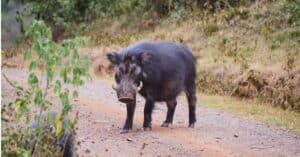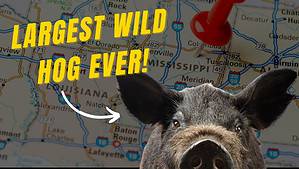Climate change is real in the world we live in. Nations and corporations, as well as ordinary people around the world, are doing their part to combat climate change. By reducing harmful carbon emissions from traveling by public transport, there are myriad ways to ensure that climate change is slowed down. One of the things that is considered environmentally friendly is cutting down the amount of meat that you eat. You see, certain meats on this planet require a lot more things to produce.
For example, beef requires more land, more fertilizer, more pesticides, and more water. When you multiply it by the number of people who want beef, it becomes an environmental problem facing this planet. On the other hand, certain meats are quite environmentally friendly. Let’s take a look at the 11 most sustainable meats in the world.
Snail
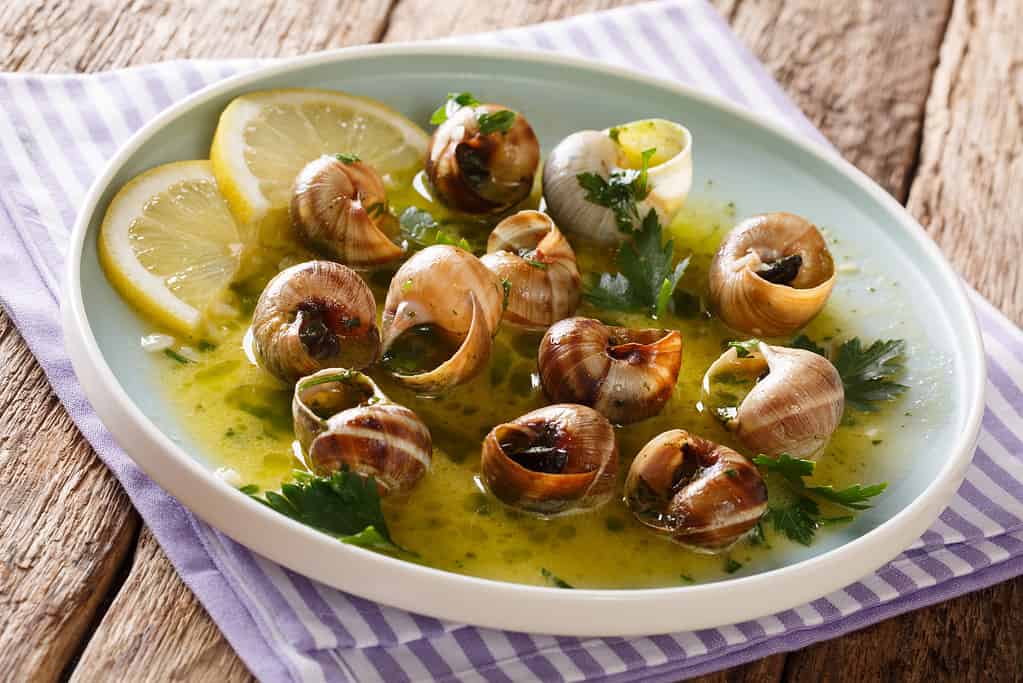
©ALLEKO/iStock via Getty Images
As you can already guess, it doesn’t really take much to farm snails. Called heliciculture, it doesn’t require much land or much water than other meats out there. It is not as carbon-intensive, either. According to Shrink That Footprint, a research website that promotes sustainable living, snail farming has a carbon footprint of 0.73 kilograms CO2eq/kg.
Duck
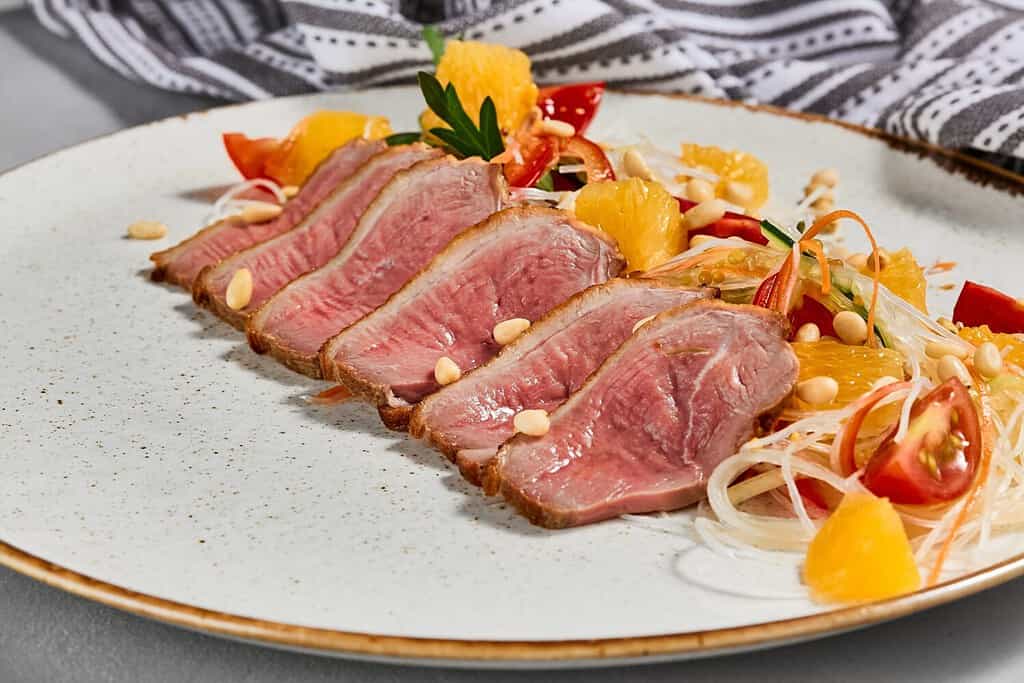
Eating duck can be good for you and has a lot of protein.
©Ryzhkov Photography/Shutterstock.com
Like other birds, duck farming is quite sustainable. It’s more environmentally friendly, it is economically sound, and many duck farmers hone in on ensuring that ducks get organic food. A lot less water and land is required, and the carbon footprint of duck farming is drastically low, too.
Rabbit
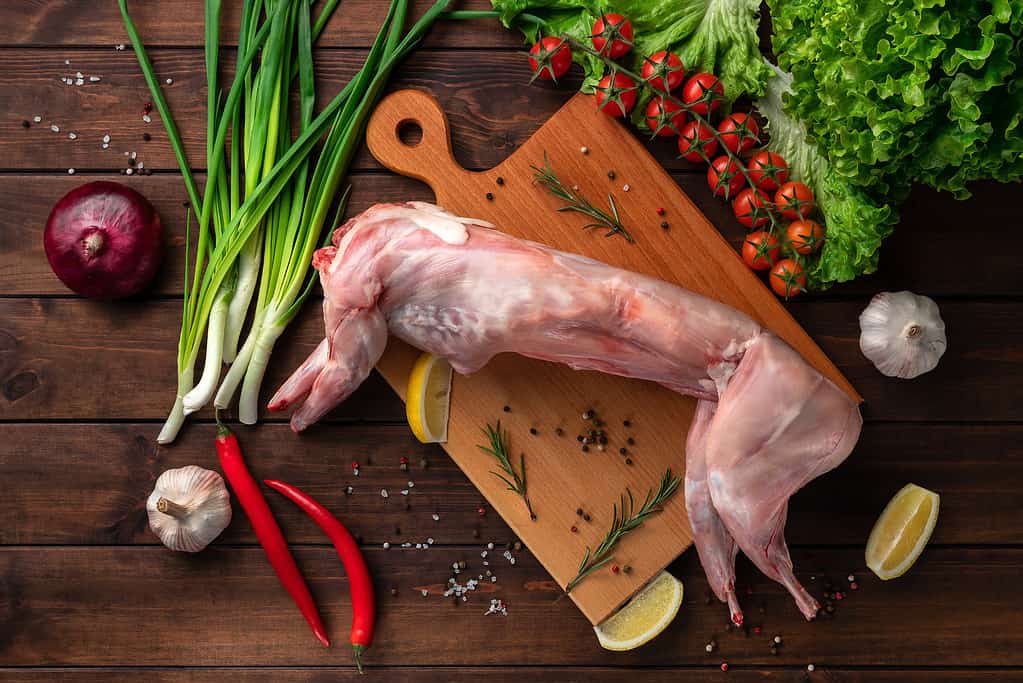
This animal is an excellent source of protein that can be revolutionary in our diets in the future.
©Alexander Labut/iStock via Getty Images
Rabbits could be extremely sustainable because, one, they do not require a lot of space, and two, it is quite easy to have more as they multiply quite rapidly. Rabbit farms also require less water, which is a big plus.
Goat
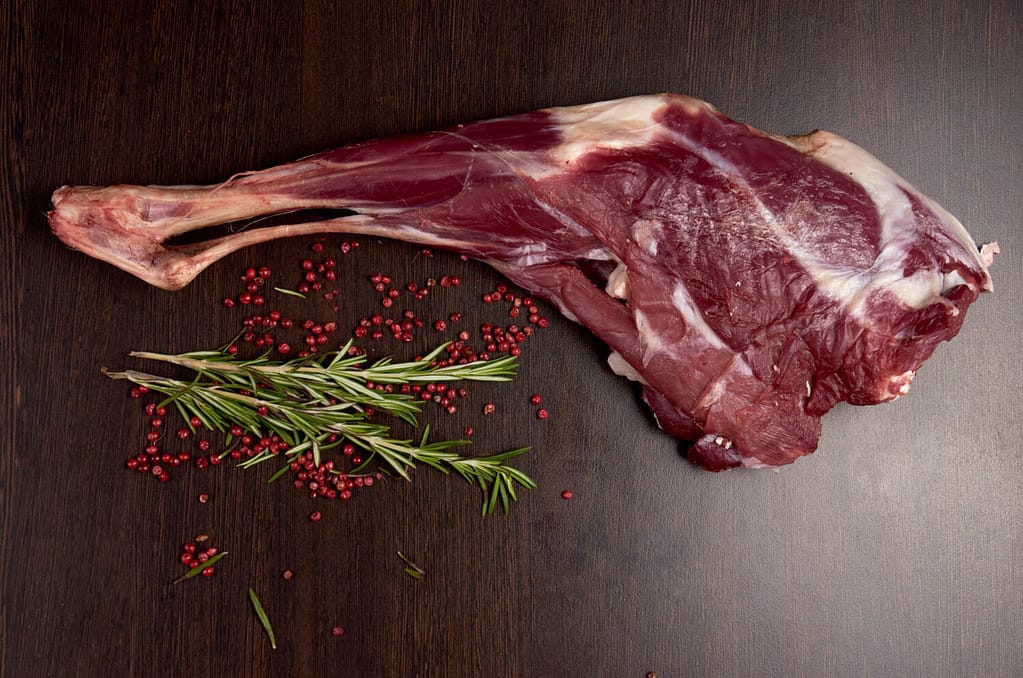
Goat meat is healthier and more lean than beef.
©Sheylest/Shutterstock.com
Livestock can contribute anywhere between 7% to 18% of the bad carbon emissions, but goats contribute much less (about 4%). Why? These animals require less space, they can kill the bad weeds on the farm, and they require less water, too. Overall, goat meat can be quite sustainable.
Venison

Eating venison ensures you have lower cholesterol and gives great sources of several nutrients including iron and zinc.
©iStock.com/bonchan
Deer are usually raised in an environment where they get to roam around freely and get to eat what they wish. It’s peaceful every day until the end. The required carbon footprint is also low, which means that eating venison isn’t a bad idea if you want to be more sustainable. Venison is also healthier than beef.
Guinea Hens
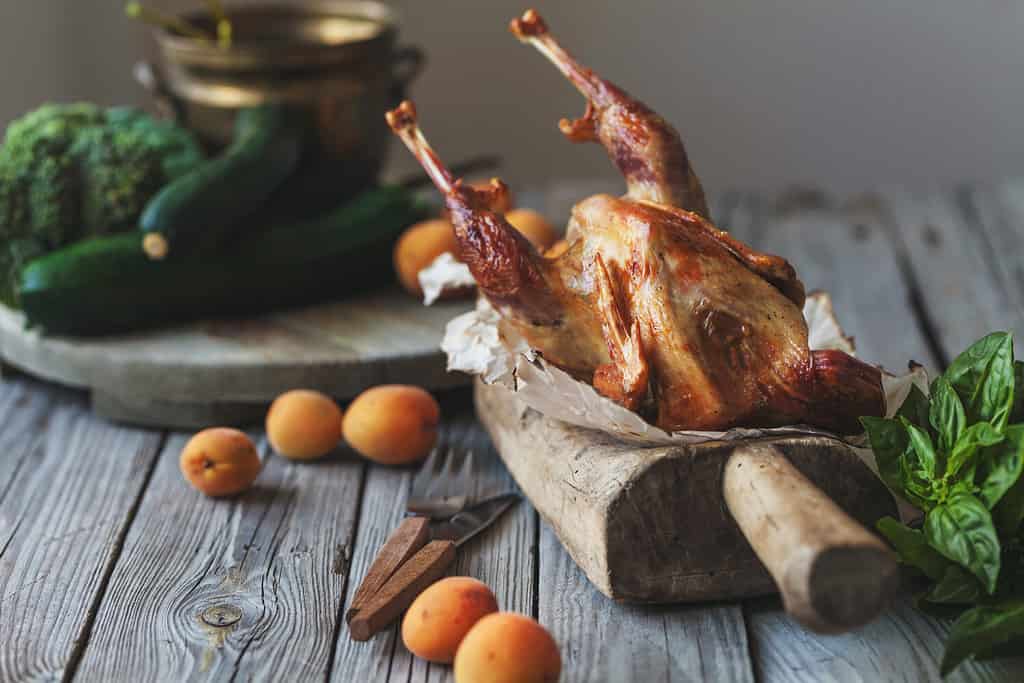
These social birds are native to Africa.
©SunKids/Shutterstock.com
Guinea hens, or guinea fowl, are similar to chickens, and raising them in an environment where they can eat what they want and where they can roam around freely, can be quite sustainable. They also require low maintenance, which is great for the farmer. This can also provide farmers with a steady income without a lot of cost. It’s a win-win situation for all.
Ostrich
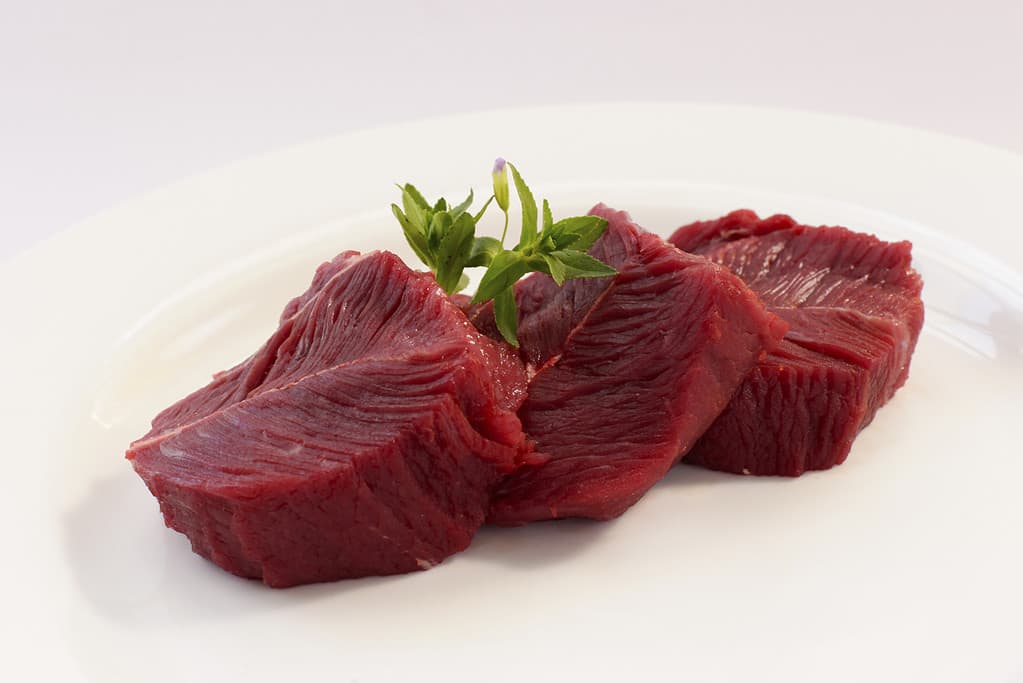
Eating ostrich can be good for you in terms of cholesterol and fat levels.
©miquang/iStock via Getty Images
A lot of people recently have been saying that ostrich meat is the way of the future. Ostrich meat is healthier, leaner, and more environmentally friendly. Ostrich farms require less water, less animal feed, and less land. All of this is perfect for the environment.
Python
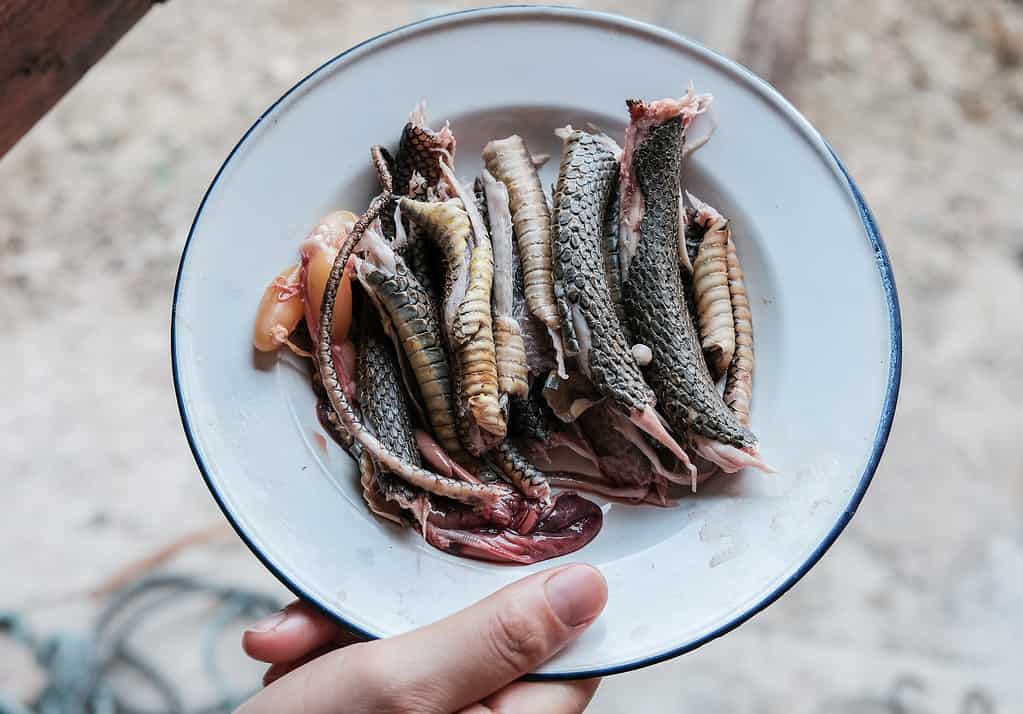
There are thousands of python farms located in Asia.
©Boyloso/iStock via Getty Images
This one might surprise you, but in a world where food security in the future could be a problem, this one might end up being a good idea. Places in Africa and Asia already eat snakes. This is not a new concept, but it needs some getting used to. Python farms have started to increase throughout the globe, and it’s extremely sustainable and cost-effective to farm, too. Eating python is a good source of protein and low in fat, too. The way of the future could be eating python, indeed.
Seafood
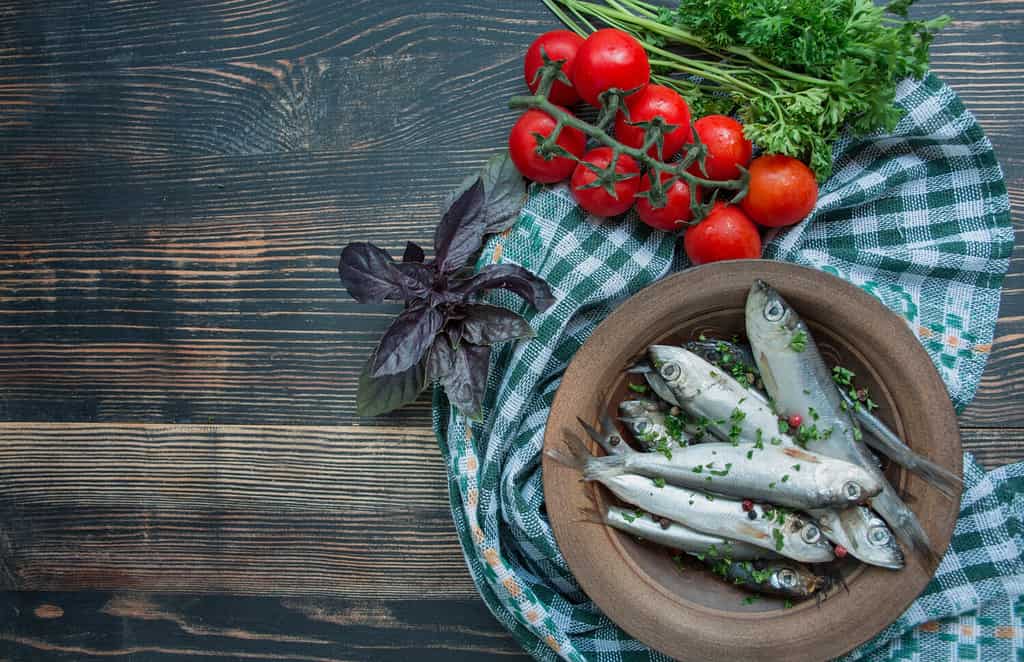
Eating seafood can significantly improve your health in a myriad of ways.
©Romashko Yuliia/Shutterstock.com
The clearest thing that should be stressed when seafood is concerned is that not all seafood is extremely sustainable. Certain ones have a lower environmental impact than others. Remember that overfishing occurs throughout the entire world. So what is the best seafood to buy? Usually, any seafood where there isn’t much of a carbon footprint. Herring and anchovies are good options to look out for at the supermarket, as well as farmed mollusks.
Turkey
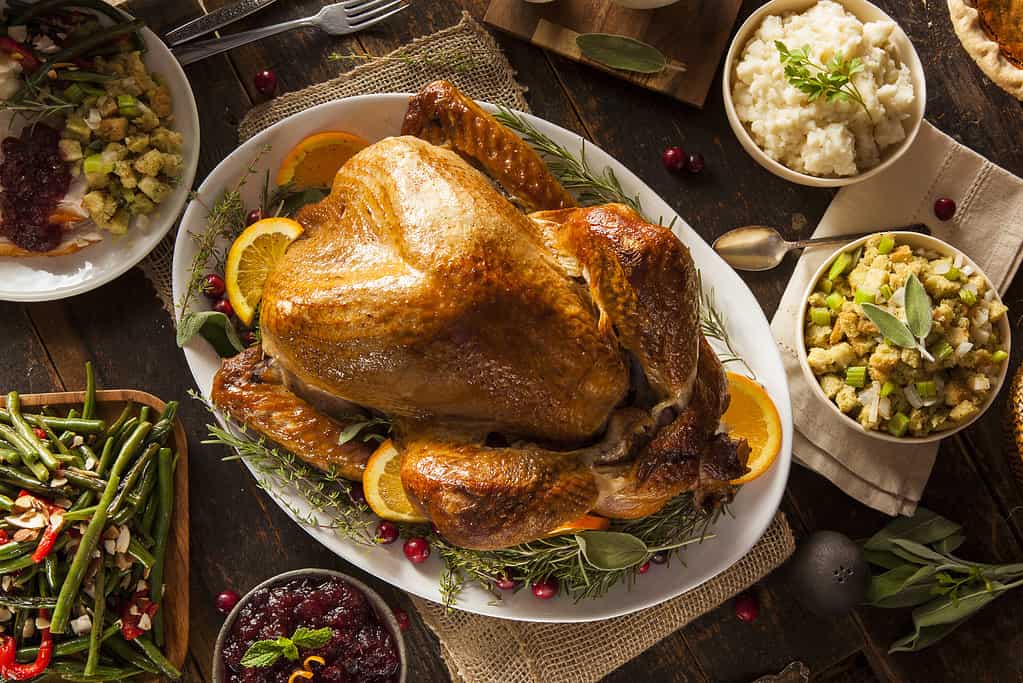
President John F. Kennedy was the first to pardon a turkey in 1963.
©bhofack2/iStock via Getty Images
Poultry requires significantly fewer resources than beef or pork. If you are looking for sustainable meat in the poultry family, look no further than turkey. A Thanksgiving favorite, turkeys are often able to roam around freely in farms, instead of being cooped up in cages. This affects everything — from sustainability to buying at the grocery store to how it tastes when you take a bite. Turkeys also have a significantly less carbon footprint than beef, pork, or lamb.
Chicken
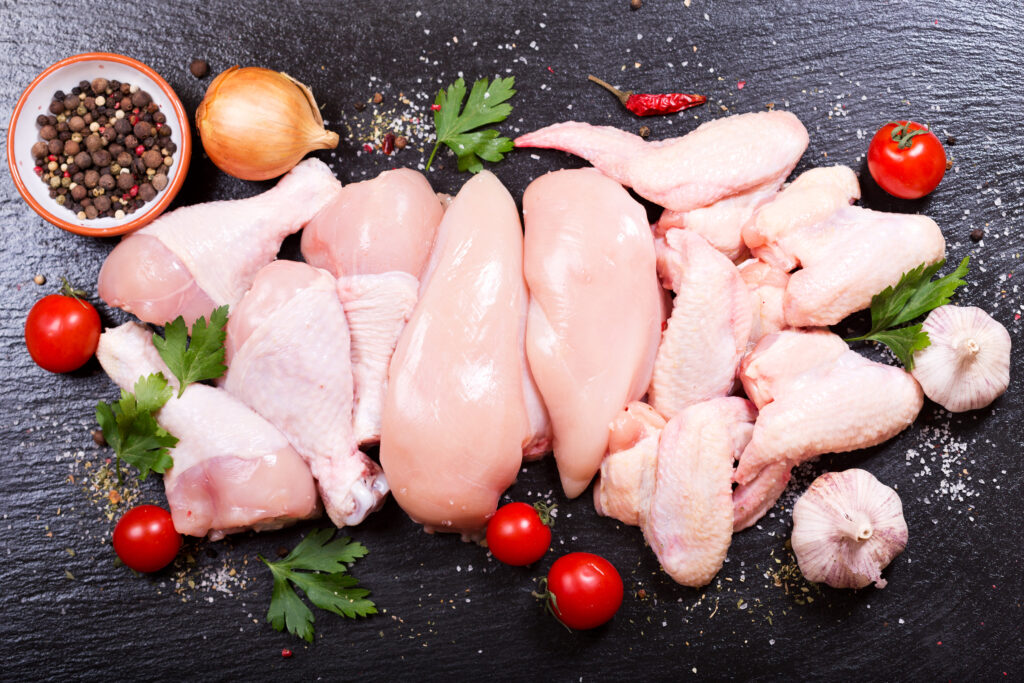
The most sustainable meat on the planet is chicken.
©Nitr/Shutterstock.com
Drum roll, please! Scientists and environmental experts agree that the most environmentally friendly meat on the planet is chicken. Of course, there are several key points with that proclamation. These chickens have to be able to graze around freely and they need to eat whatever is on the ground, too. What does this mean? They can’t be cooped up in cages. If these chickens are organically-fed and pasture-raised, then they require much less water, and land, and the carbon footprint is drastically lowered.
The photo featured at the top of this post is © Keshishian/iStock via Getty Images
Thank you for reading! Have some feedback for us? Contact the AZ Animals editorial team.





